Don't wanna be here? Send us removal request.
Text
Knowing that I am getting stalked is a weird mind fucking experience I am just fucking deleting all these apps ;-;
26 notes
·
View notes
Text
Never in my life I have been asked why do I have a small nose. I don't know because neither does mom and nor does dad lol and I never perceived it to be small last I remember rachin trying to make me feel conscious of my nose which is so weird lol me love every inch of my face even if it's ugly lol suck it but yeah now I do wonder where did I get it from?
2 notes
·
View notes
Text
I asked tarot if I am under a spell it said yes lol where will I get a apple twig from to burn?

Oooooof will have to go down + and that's just too much hard work :")
0 notes
Text
Watch "i don't know - sonia ammar // lyrics" on YouTube
youtube
Lmao found myself in a song again if this isn't me 💀💀💀💀💀💀💀💀💀💀💀💀
I am now a bit more sane though because we don't go back B) unless tarot says lol
0 notes
Photo
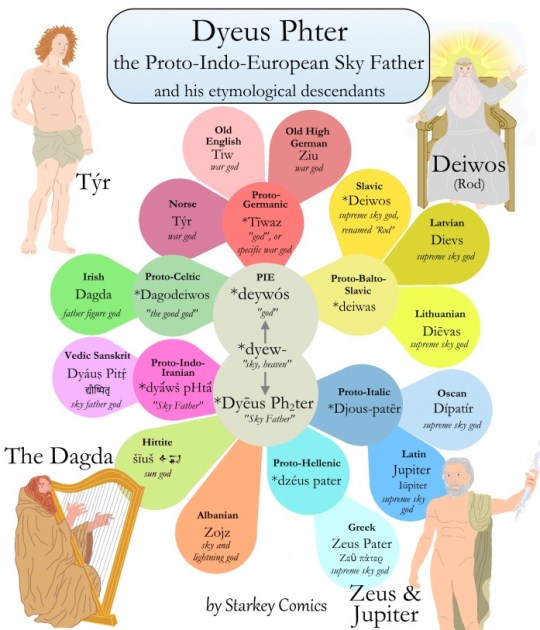
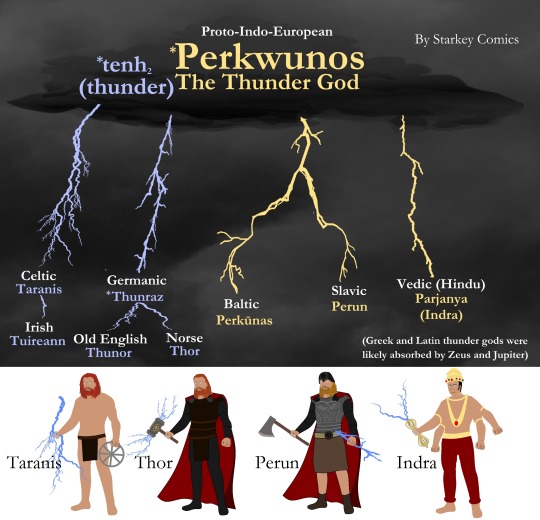
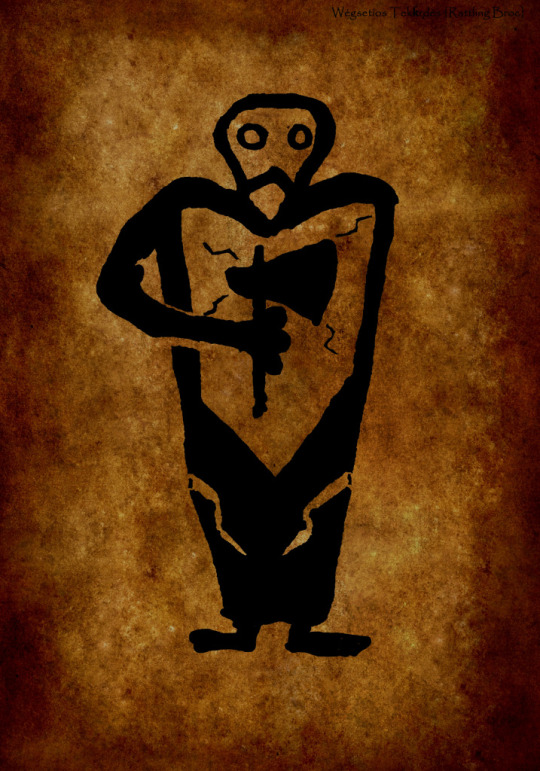
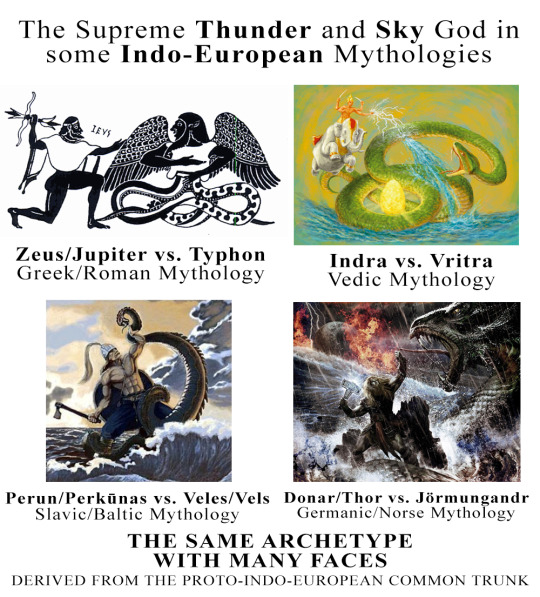
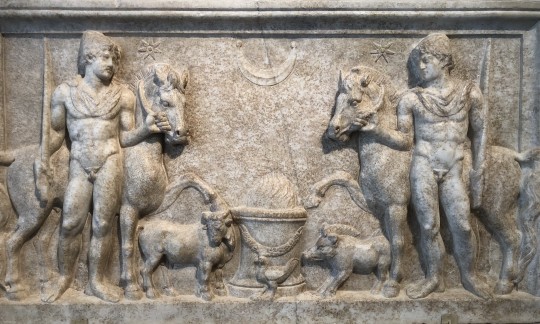
Proto-Indo European Deities
One of the most likely theories, considering the origins of most of the Germanic spiritual practices and Gods, is that they have originated from the bronze age people who came into contact with the Proto-Indo Europeans. These Proto-Indo Europeans spread their language, traditions, way of life and spirituality all across Europe (with a few exceptions). In this post I want to name several reconstructed Proto-Indo European deities and their etymological descendants throughout Europe, and the middle east and India.
Dyeus: At first I want to begin with Dyeus. This is the reconstructed name of the chief God of the Proto-Indo European pantheon. The name means ‘brightness of the day’ and is reconstructed with the help of Grimm’s law and by carefully researching related languages such as Sanskrit, Ancient Greek, old Armenian and old Anatolian. All of the Indo-European languages, modern and old, seem to have a common root word for God.
The meaning of the name plus the fact that the root is still visible in every Indo-European language, suggests that this deity was incredibly important, most likely the most important of all deities. Dyeus is the sky father, associated with brightness and the skies and perhaps creator of mankind according to the Proto-Indo Europeans. There are however no written sources nor physical evidence describing Dyeus so his exact role will forever be a mystery.
If we look at the Proto-Indo-European root 'Dyeu’, we can discover many deities with a very similar name and role. These deities are likely etymological descendants of Dyeus, here is a list:
Proto-Indo European: Dyeus Hellenic: Zeus Hittite: Sius Thracian: Zi or Diu Vedic: Dyaus Pittr Indo-Iranian: Dyaus Anatolian: Diu Roman: Jupiter Slavic: Diva Baltic: Deiwas Germanic: Tiwaz and Wodanaz Gaulish: Deuos Gaelic: Dagda
Perkwunos: This is the reconstructed name of the thunder/weather god of the Proto-Indo European pantheon. The meaning of the reconstructed name means either: 'the striker’ or 'lord of the oaks’. Two roots are possible for this theory, the root 'Per’, which means 'to strike’ and perkus 'the oak’. It is also possible that both roots are actually united since it is possible that people associated high trees, like oaks, with lightning strikes.
We do not know how Perkwunos looks like but if we compare his etymological descendants with each other, it seems that Perkwunos might be wielding a weapon like a hammer or a club. He’s not only the god of thunder but appears to be controlling all of the weather. Perhaps the Proto-Indo Europeans prayed to him when they wanted rain for their crops or when they wanted a natural disaster to stop. Here is a list of his etymological descendants:
Proto-Indo European: Perkwunos Slavic: Perun Baltic: Perkunas Vedic: Parjanya/Indra Greek: Heracles and/or Keraunos (the name of Zeus’ bolt) Gaulish: Taranis Gaelic: Tuireann Germanic: Donar/Thor Thracian: Perkos Scythian: Pirkunas Nuristani (Afghanistan): Pärun Illyrian: Perendi
Neptonos: This is the reconstructed name of the God of the seas/waters. The name literally means 'Grandson of the waters’ and it has been reconstructed by observing all of the sea deities of the Indo-European cultures. Since we have no image or written sources about this deity, we do not know how he would have looked like, perhaps he was holding a staff like most other sea deities. We also do not know his exact role in the Proto-Indo European pantheon but he is apparently master of all the waters of the earth. Here is a list of his etymological descendants:
Proto-Indo European: Neptonos Hellenic: Neptune Roman: Poseidon Gaulish: Nodens Gaelic: Manannán Germanic: Nehalennia/Njördr/Nerthus Vedic: Varuna Illyrian: Bindus Baltic: Bangputys
Suhul: This is the reconstructed name of the deity related to the sun. There is less evidence for this deity but it seems that the Proto-Indo European root for sun 'Suhul’ is connected to quite some sun deities. Here is a list of etymological descendants of Suhul:
Proto-Indo European: Suhul Gaulish: Sulis Hellenic: Helios Roman: Sol Germanic: Sól Slavic: Dazhbog Baltic: Saule Vedic: Surya
Mehnot: This is the reconstructed name for the deity related to the moon. It is a common Indo-European tradition to have two deities related to the sun and to the moon so it is possible that they have a common root with a Proto-Indo European Moon God. Here is a list of etymological descendants of Mehnont:
Proto-Indo European: Mehnot Gaelic: Elatha Hellenic: Selene Roman: Luna Germanic: Máni Slavic: Hors Baltic: Menulis Vedic: Soma
The divine twins: Sadly it is impossible to reconstruct the name of these divine twins but it is a well accepted theory that these are either two brothers or brother/sister of the Sky God Dyeus. Almost every Indo-European religion has a divine twin riding either a horse or another animal. The role of this twin is unclear since divine twins from related cultures seem to have seperate roles. Here is a list of etymological descendants of the divine twins:
Proto-indo European: divine twins/name unknown Vedic: The Asvins Baltic: the sons of Dievas Hellenic: Castor and Pollux/Dios-Kouroi Germanic: Frey and Freya/Hengist and Horsa Polish: Lel and Polel Indo-Iranian: Nakula and Sahadeva Etruscan: Tinas Clenar/sons of Jupiter Gaulish: Divanno and Dinomogetimarus Welsh: Bran and Manawydan
Dheghom: This is the reconstructed name of the earth-Goddess. Mother earth seems to have been known since paleolithic times although we can of course not provice any proof for this theory. She’s most likely the wife of the Sky God Dyeus as this is usually the case in Indo European religions. She represents growth, fertility and death. The meaning of her name is still being debated but it might mean 'the broad one’. Here is a list of her etymological descendants:
Proto-Indo European: Dhegom Gaelic: Danú Hellenic: Hera or Gaia Slavic: Maty Syra Zemlya Baltic: Zemyna Roman: Juno Thracian: Zemela Germanic: Nerthus/Jörd Vedic: Prithvi
God of the Underworld: Sadly it is also not possible to reconstruct the name for the God of the underworld but since virtually every Indo European religion has a God/Goddess of the underworld, it is very likely that the Proto-Indo Europeans also had a deity to guard the underworld. Here is a list of etymologically related Gods of the underworld:
Proto-Indo European: unknown Vedic: Yama Hellenic: Hades Roman: Dis Pater Slavic: Veles Baltic: Velinas Germanic: Hel/Holle Gaelic: Aed
Pehuson: This is the reconstructed name of a deity representing nature itself. We do not know how he looked like or what his attributes were, we do know that many Indo-European deities have similar Gods representing nature. Here is a list of etymological descendants of Pehuson:
Proto-Indo European: Pehuson Gaelic: Cernunnos Gaulish: Cernunnos Germanic: Ullr/Frey Hellenic: Pan Roman: Faun Vedic: Pushan
Hausos: This is the reconstructed name for the deity of dawn or spring. She represents the rebirth of nature and warmth thus her attributes are quite similar to the solar deities. Yet again most Indo-European religions appear to have a deity of dawn/spring. Her name means 'to shine’. Here is a list of her etymological descendants:
Proto-Indo European: Hausos Gaelic: Brighid Gaulish: Brigantia Germanic: Eostre Hellenic: Eos Roman: Aurora Slavic: Zorya Baltic: Ausrine Vedic: Ushas
Here are other beings that are present in virtually every Indo European religion and thus have likely a common root in the Proto-Indo European religion:
Beings of fate: There is a very big possibility that the Proto-Indo Europeans believed in three Goddesses or beings who were able to spun or weave the fate of all living beings in the universe. They often appear as either three young maidens or three women representing the three stages of life or the three stages of time (past, present, future). Here is a list of possible etymologically related beings of fate:
Proto-Indo European: name unknown Hellenic: the Morai Germanic: the Norns Hittite: the Gulses Roman: the Parcae Baltic: Deives Valdytojos Slavic: Rozanicy Albanian: the Fatit Gaulish: The three Morrigna
The giant serpent: Almost every Indo-European religion has an epic story of a hero battling a gigantic snake/dragon/serpent. This hero is often the thunder God or another deity related to weather. Because this theme is so incredibly common, it is a very likely theory that the Proto-Indo Europeans also believed in a giant serpent/dragon and a thundergod (Perkwunos) who fought it. Here is a list of etymologically related serpents:
Proto Indo-European: Unknown Hittite: Illuyanka (slain by Tarhunt) Vedic: Vritra (slain by Indra) Hellenic: Typhon (slain by Zeus)/ Hydra (slain by Heracles) Germanic: Jörmungandr (fought by Donar/Thor) Persian: Zahhak (slain by Fereydun) Slavic: Veles (slain by Perun) The Christian/Jewish story of the Genesis: Tehom Sumerian: Tiamat Armenian: Vishap (slain by Vahagn) Gaelic: Meichi (healed by Dian Cecht)
I am so sorry for this incredibly long post but I hope you have some more insight into the Proto-Indo European pantheon and realise that all European deities (with a few exceptions) all represent the same attributes/roles/beings. The stories of the Germanic Gods are not unique but a shared story with other European and even Indian native religions.
Here are images of: Dyeus and his etymological descendants by Starkey Comics, Perkwunos and his etymological descendants by Starkey Comics, A modern interpretation of Perkwunos by Wegsetios Tekkerdes, An image depicting several Serpent/hero battles. An image representing the divine twins (Castor and Pollux),
378 notes
·
View notes
Text
Honestly I feel so connected to her and these aesthetics :")

Germanic Mythology Aesthetic - Nehalennia, goddess of North Sea
9 notes
·
View notes
Text

Germanic mythology aesthetic - Nehalennia goddess
13 notes
·
View notes
Text
Nehalennia Candle Shrine
I've been sitting on these pictures for a while, but it's time for me to share them. Last year for the second harvest festival I made a lantern!

There was an amazing festival dedicated to the Dutch Goddess Nehalennia, which I attended. It was a lot of fun and simply awesome to have participated in.

I took a dollar store lantern and a white paint pen and went to work.

I added my Nehalennia bindrune to the sides.


And made a candle dedicated to Her. (Tutorial here)
I hope to able to go to the festival again this year. I still burn the candle regularly, whenever I need to feel Her close 🌊💙
157 notes
·
View notes
Photo


Nehalennia
Goddess of the North Sea
Nehalennia has unclear origins, and scholars are unsure whether to place her in the Germanic or Gaulish pantheon. In fact, there is very little we know about her. We know she was worshiped along the North Sea, that her main temple was in Zeeland, where the Rhine flows into the North Sea. We know that people as far as the north of France came to that temple to pray to her. We know that people imported incredibly expensive stone to make shrines for her in exchange for good fortune and passage over the North Sea. We know that her worship dates back at least to the 2nd century BC, and veneration of the goddess flourished in the 2nd and 3rd centuries AD.
Her imagery includes: ships, apples, loaves of bread, greyhounds (or similar hound-type dogs).
She is most often depicted seated, the hound at her feet, either carrying a basket of bread or apples in her lap, or the basket on the ground next to her, a ship by or under her feet, and she is always wearing a long dress, layered with two types of cloaks, the topmost being hooded. The cloaks are specific to her, and there are no other goddesses that wear a similar attire.
It is speculated that she is the North Sea itself. It is speculated that she makes the storms as well as pacifies them. It is speculated that she is a benign goddess that keeps the sailors safe.
In my experiences with Nehalennia, I have come to find that she is both the storm as well as the peace. She both crushes the ships at her feet as well as guides them home.
56 notes
·
View notes
Photo

Nehalennia a beautiful Frisian goddess of Northern trade as depicted by Andrew Whyte.She is not attested in any Anglo-Saxon sources, but it is very likely she was worshipped by the English too.
Her cult is attested in the form of dozens of votive images dating to the second and third centuries AD, mainly from the Netherlands. She seems to have been a goddess of maritime trade from the Netherlands to Britain and Scandinavia.
Like the Matres, her cult was very Romanised. There is some dispute over whether she was Celtic or Germanic but the name seems to be Latinised Low German.She is often depicted with a boat or holding an oar. In some images she is seated, accompanied by a dog, and carrying a basket of apples or baked loaves suggesting she may be a regional variant of Erce or some such Earth-Mother. In other images, she is shown with two other goddesses, just like the Matres or Matronae. A sea-god sometimes appears on the sides of her altar or separately, carrying a dolphin and armed with a trident like the Greek Poseidon.
What we are seeing is a highly syncretic cult of a native goddess which was formalised under Roman influence where it was centred in the Netherlands prior to the migration of Frisians from that region to Britain with the Anglo-Saxon invasion. It is almost inconceivable that the Frisian migrants did not continue to worship her in England particularly since they already would have associated her with British trade.
Check out more of Andrew’s art on his website
79 notes
·
View notes
Photo




A Dutch Goddess, Nehalennia is a goddess of unclear origin, perhaps Germanic or Celtic, but till this day, no one is really sure. But does it matter? Nehalennia is attested on and depicted upon numerous votive altars discovered around what is now the province of Zeeland, the Netherlands, where the Rhine River flowed into the North Sea. Worship of the goddess Nehalennia dates back at least to the 2nd century BC, and veneration of the goddess flourished in the 2nd and 3rd centuries AD. Now, anno 2018, people have formed new rituals, reconstructed her worship and cult. Personally, I have never been to her temple (first picture) that they have re-build a small decade ago. Since I live closer to Germany than to the sea, it feels different. Though, Nehalennia is an active part of Dutch myth and folklore. From what I remember she was petitioned and thanked for safe-sea-travel. Most of the votive statues (last picture) are dedicated to her, as thanks for a safe return home. But besides her sea-aspect, there is another clue that Nehalennia is also an underworld deity, what is suggested by the dog on her side. As are the apples. Though seeing that the Dutch always have been drawn to the water, in one way or another, this is not unthinkable for them to have placed the underworld in conjunction with water/the sea. The other picture is from a ceremony that was conducted in honor of Nehalennia.
117 notes
·
View notes
Text
My downstairs feel like they are getting railed and being hit by a metal pipe how to sleep when you are sleepy but pain won't let you 😭😭😭😭😭😭😭😭🤧🤧🤧🤧🤧🤧🤧🤧🤧🤧🤧🤧🤧🤧🤧🤧🤧
0 notes
Text
A really disturbing realisation I had. The reason I ever got crush on rohit might be because he called me "bachee" that too in such an adoring and caring voice but he said that too everyone but the issue is my dad calls that shit to my mom only and my brain confused that shit no wonder ;-; I have no idea how I never noticed this before :/ half issue is my parents confuse me 😭😩😵 because that's my mum's nickname given by dad no wonder I will like to jump off of a fucking I dunno, cliff? ;-; because ish need to be so aware and next time somebody by mistake calls me that I am going to stop them then and there 🤧🤧🤧🤧🤧🤧🤧🤧
1 note
·
View note
Text
Periods is just me wishing I had a boyfriend knowing very well how I am unable to make emotional connections with men and who I do create emotional connections with I look at them as brothers and I might be seen talking about men but that's just me trying to force myself to like men 😭 I don't like men only I wish I was normal I swear making emotional connection with someone is just so hard and all men are C's I hate most of them and they repulse me. I hate each and almost everyone and I do not know how to explain that. I genuinely do not know how to because it's not the whole gender I am just attracted to specific dudes and that has happened now like 3 times in my life and two were just mellow and I just am not capable of that at all and I just want to cry sometimes because how awful is that? I swear I am close to being a saint it isn't nice this feeling I just ghost people and then cry because I don't want to be there for them when I am not emotionally there I can't fake shit and I don't have the instinct to also be into chicks like I can flirt and all but I feel weird later on same with dudes that I don't like everyone repulses me and even though I tried I can't it's me having a mental breakdown how I will just stay alone just because I can't develop feelings for people and just have little crushes from time to time and the one's I did develop something for were toxic for me I think it has got something to do with self esteem and ish. I don't know. I don't care. I won't after I get over with satan's blood bag. I just hate the fact I will be stuck with a man later on in life for whom I won't be able to get emotions for. I just I do not know. It sucks to be me. I just want to go take sanyaas and stuff I wish I was joking sometimes but I am not but then I remember I don't like hot weather.
0 notes